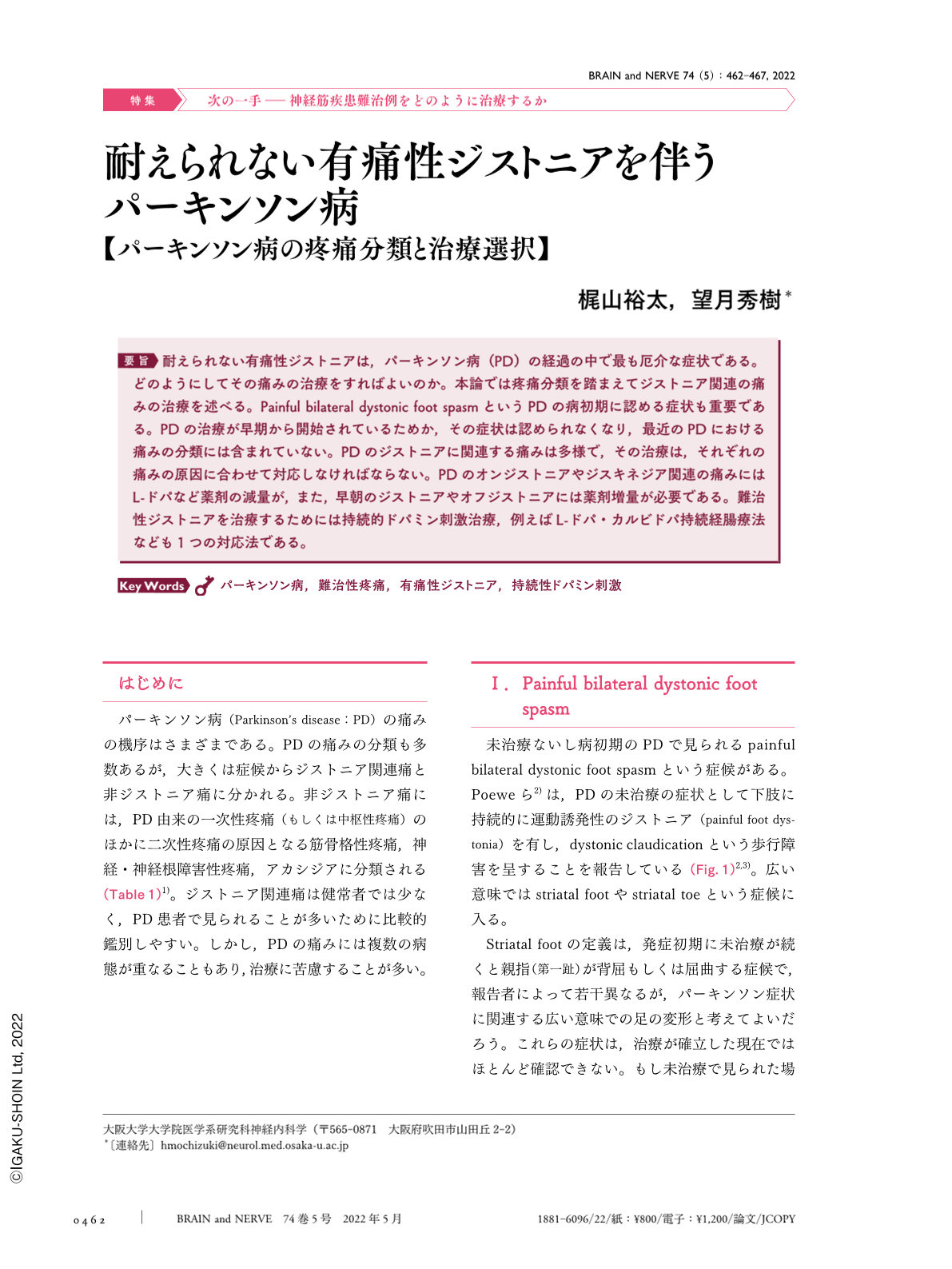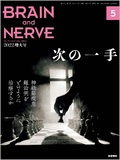Japanese
English
- 有料閲覧
- Abstract 文献概要
- 1ページ目 Look Inside
- 参考文献 Reference
耐えられない有痛性ジストニアは,パーキンソン病(PD)の経過の中で最も厄介な症状である。どのようにしてその痛みの治療をすればよいのか。本論では疼痛分類を踏まえてジストニア関連の痛みの治療を述べる。Painful bilateral dystonic foot spasmというPDの病初期に認める症状も重要である。PDの治療が早期から開始されているためか,その症状は認められなくなり,最近のPDにおける痛みの分類には含まれていない。PDのジストニアに関連する痛みは多様で,その治療は,それぞれの痛みの原因に合わせて対応しなければならない。PDのオンジストニアやジスキネジア関連の痛みにはL-ドパなど薬剤の減量が,また,早朝のジストニアやオフジストニアには薬剤増量が必要である。難治性ジストニアを治療するためには持続的ドパミン刺激治療,例えばL-ドパ・カルビドパ持続経腸療法なども1つの対応法である。
Abstract
Disabling painful dystonia is one of the most burdensome symptoms that a patient with Parkinson's disease (PD) experiences. How do we treat disabling painful dystonia in PD? In this review, classification and mechanisms of pain and their management in PD especially for dystonia-related pain are described. Moreover, painful bilateral dystonic foot spasm is also an important development to be considered in the early stage of the disease. Recent classification of pain in PD does not involve this symptom, partly because this symptom is relatively unobserved due to early initiation of treatment in PD patients. Treatment options for dystonia-related pain are diverse and are necessarily contingent on the cause of dystonia in PD. Reducing L-dopa and other drugs is useful for patients with on-dystonia and dyskinesia-related pain in PD. Increasing L-dopa and other drugs are better for early morning dystonia and off-period dystonia-related pain in PD. Finally, as severe and troublesome painful dystonia is often challenging to treat, continuous dopaminergic stimulation such as treatment with levodopa-carbidopa intestinal gel is considered effective for these symptoms.

Copyright © 2022, Igaku-Shoin Ltd. All rights reserved.


